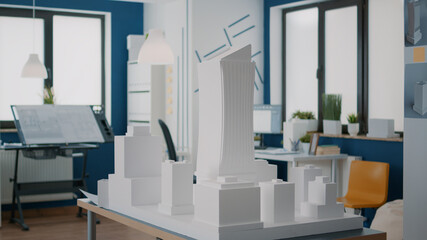Additive manufacturing, commonly known as 3D printing, has revolutionized the way we design and produce a wide array of products. From intricate jewelry to large-scale architectural models, the possibilities are endless. Among the numerous technologies in this realm, PolyJet printing stands out due to its unique capabilities and potential.
Understanding PolyJet Printing
PolyJet printing is a form of additive manufacturing that employs photopolymer resin. The process involves jetting tiny droplets of the resin onto a build platform, which are then cured by ultraviolet (UV) light. This results in extremely precise parts with smooth surfaces and fine details.
The advantages of PolyJet printing over other 3D printing methods are numerous:
Multi-Material Printing
One of the paramount benefits of PolyJet printing is its ability to print with multiple materials simultaneously. This unique feature allows designers to create parts with varying properties like flexibility and rigidity, transparency, and color within a single print job. This opens up new avenues for innovation in product design and prototyping.
High Resolution
PolyJet printing is renowned for its high resolution. It can reproduce extremely fine details and complex geometries that are beyond the capabilities of other 3D printing technologies. This makes it an ideal choice for applications requiring precision, such as medical modeling, prototyping for microelectronics, jewelry design, and more.
Speed and Efficiency
PolyJet printing is fast and efficient, allowing for rapid prototyping and reducing time-to-market. Designers can iterate and refine their products quickly, leading to improved end results and cost savings.
Smooth Surfaces
Unlike many other 3D printing techniques, PolyJet printing yields parts with very smooth surfaces, often eliminating the need for post-processing. This not only enhances the aesthetic appeal of the printed parts but also reduces the overall production time.
Color and Texture Capabilities
With PolyJet printing, it’s possible to print parts in a wide range of colors and textures, offering unparalleled aesthetic versatility. From transparent to opaque, glossy to matte, and rigid to flexible, this technology can mimic an extensive array of material properties.
Support for Complex Designs
PolyJet technology excels at producing intricate designs that would be difficult or impossible with traditional manufacturing methods. It supports complex geometries, overhangs, and even moving parts, providing designers with virtually unlimited creative freedom.
PolyJet Materials
PolyJet technology uses a wide range of materials, including rigid opaque, transparent, rubber-like, and digital materials. These materials can simulate properties of standard plastics, elastomers, and even specialized materials like ABS and polypropylene. Unlike other forms of 3D printing that rely on a single material, PolyJet printing can combine multiple materials in a single print job, enabling an unprecedented level of design freedom.
Applications of PolyJet Printing
PolyJet 3D printing has indeed made significant strides across various sectors, revolutionizing the way we produce and prototype products.
In the automotive industry, PolyJet technology has become an invaluable tool for creating detailed, multi-material prototypes of car parts. This technology facilitates the production of complex parts with moving components, allowing manufacturers to test functionality and fit before moving to full-scale production.
The aerospace sector also benefits from PolyJet 3D printing. This technology’s precision and ability to produce lightweight yet sturdy components align perfectly with the industry’s needs. These characteristics are vital in an industry where every gram counts, and safety is paramount.
In the medical field, PolyJet printing is playing a transformative role. Medical device companies are harnessing this technology to create highly accurate anatomical models for surgical planning. These models, which can replicate patient-specific anatomy, provide surgeons with a valuable tool for pre-operative planning and practice, potentially improving surgical outcomes.
Furthermore, PolyJet printing excels in creating customized consumer goods. It enables rapid prototyping, allowing companies to iterate and improve their designs faster. This speed and flexibility are crucial in today’s fast-paced consumer market, where trends shift quickly, and customization is increasingly in demand. From custom phone cases to personalized jewelry, the possibilities are vast.
Moreover, PolyJet printing’s ability to simulate the over-molding process in manufacturing with realistic multi-material prints makes it ideal for prototyping designs for overmolding or silicone rubber parts. This capability is particularly useful in industries such as consumer electronics, where overmolding is often used to create soft-touch surfaces on devices like smartphones and wearables.
Finally, the technology’s high resolution and accuracy make it suitable for producing prototypes with complex geometries and thin walls, expanding its potential applications across various fields.
As we move forward, we can expect to see even more innovative applications of PolyJet 3D printing as industries continue to explore and leverage its unique capabilities.
The Future of PolyJet Printing and Additive Manufacturing
The future of PolyJet printing and additive manufacturing looks promising. As technology advances, we can expect to see improvements in print speed, material properties, and overall print quality. Moreover, as more industries recognize the benefits of additive manufacturing, the demand for PolyJet printing is likely to increase.
However, like any technology, PolyJet printing faces its share of challenges. These include the relatively high cost of materials and machines, the need for post-processing, and the limited build size compared to other 3D printing technologies. Despite these challenges, the opportunities far outweigh the limitations, making PolyJet printing a key player in the future of additive manufacturing.
Conclusion
PolyJet printing is a powerful technology that has the potential to shape the future of additive manufacturing. With its ability to create highly detailed, multi-material parts quickly and accurately, it offers unparalleled design freedom. Although challenges exist, the ongoing advancements in this field promise to overcome these hurdles and open up new possibilities. Indeed, PolyJet printing is not just part of the future of additive manufacturing – it is paving the way.



